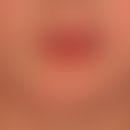Synonym(s)
DefinitionThis section has been translated automatically.
Rare, chronic, esosinophilic, transmural inflammation of the bladder wall, which can occur independently, but also as a partial symptom of idiopathic hypereosinophilic syndrome (HES).
ClassificationThis section has been translated automatically.
A distinction is made between allergic and non-allergic eosinophilic cystitis.
Allergic reactions to inhalative allergens (simultaneous occurrence with bronchial asthma or other allergic organ diseases) Food allergens, drugs, foreign bodies and parasites are discussed.
In the case of non-allergic eosinophilic cystitis, the history often shows transurethral resections with and without topical chemotherapy.
You might also be interested in
ManifestationThis section has been translated automatically.
Possible at any age. About 1/3 of the cases refer to children.
ClinicThis section has been translated automatically.
LaboratoryThis section has been translated automatically.
Mostly clear blood eosinophilia
HistologyThis section has been translated automatically.
Beneath a hyperplastic urothelium, diffuse eosinophilic infiltrates of varying density are found in the edematous lamina propria, which also infiltrate the urothelium in places. Also giant foreign body cells.
DiagnosisThis section has been translated automatically.
Cystoscopy with bioptic backup. In rare cases, granulomatous or glandular pseudotumours may occur. In this case, bioptic malignancy must be ruled out.
TherapyThis section has been translated automatically.
Since there are no standardized treatment methods due to the rarity of the disease pattern, oncological control and individual therapy should be closely monitored and carried out. Anthistamines were mostly used in combination with corticosteroids.
Follow-up examinations are particularly indicated in cases of a significant proliferation tendency of the urothelium, but the development of a malignoma has not been described so far.
LiteratureThis section has been translated automatically.
- Saadi A et al (2015) Pseudotumoral eosinophilic cystitis. Urol Case Rep 3:65-67.
- Mosholt KS et al (2014) Eosinophilic cystitis: three cases, and a review over 10 years. BMJ Case Rep pii: bcr2014205708.
- Kojima K et al (2013) Eosinophilic cystitis presented as a manifestation of hypereosinophilic syndrome: a case report and review of the literature. Nephron Extra 3:30-35.
- Nofal R (2007) Eosinophilic cystitis as a symptom of idiopathic hypereosinophilic syndrome. Act urol 38: 148-151
- Sparks S et al (2013) Eosinophilic cystitis in the pediatric population: a case series and review of the literature. J Pediatric Urol 9:738-744.
Disclaimer
Please ask your physician for a reliable diagnosis. This website is only meant as a reference.




